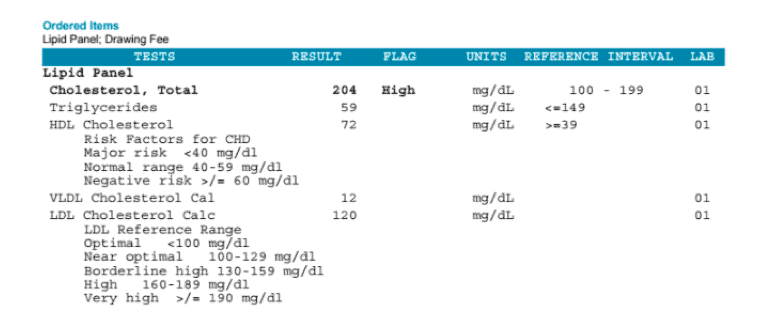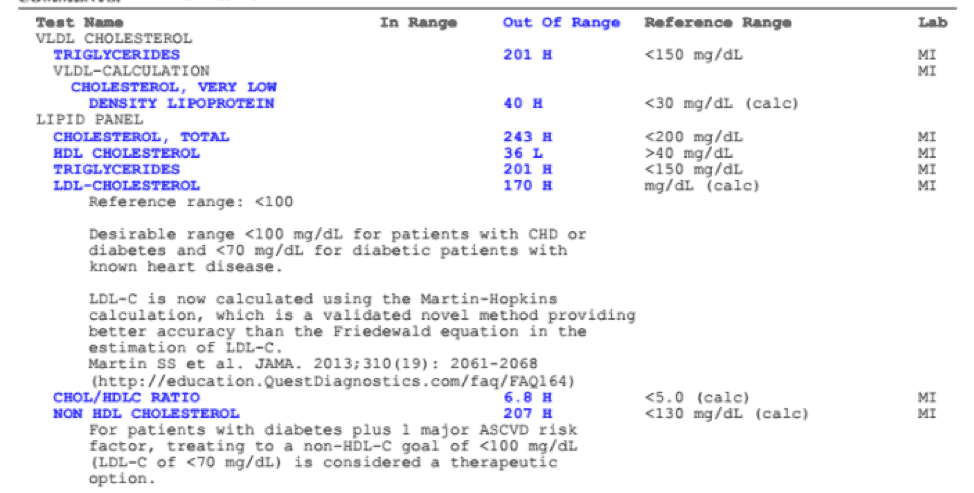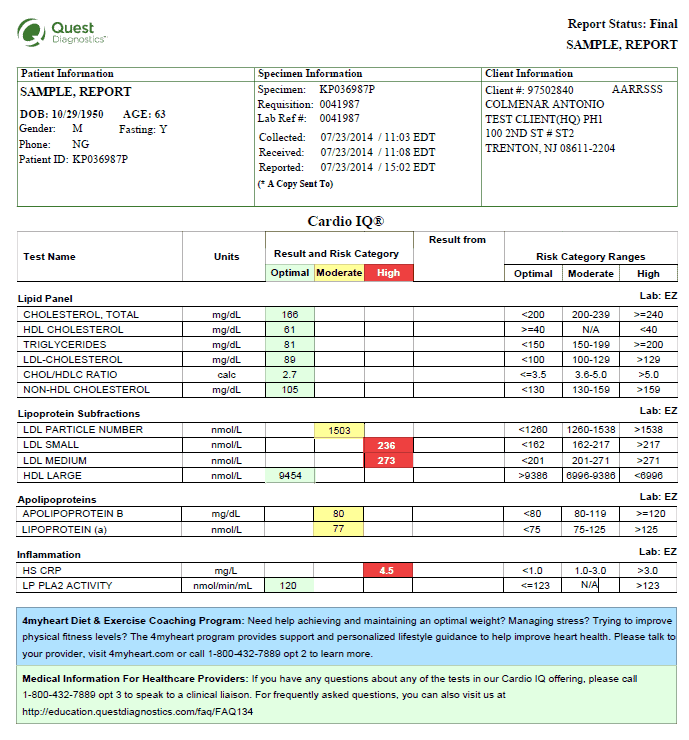
Interpreting Blood Tests - Lipid Panels
Blood tests that provide data regarding the concentration of various serum biomarkers are often grouped together as a collection of common tests. The two most common panels are the Basic Metabolic Panel, the standard Lipid Panel.
The standard Lipid Panel is a battery of blood tests that show the following:
- Total Cholesterol
- Total HDL (high-density lipoprotein)
- Total LDL (low-density lipoprotein)
- Triglycerides
At some labs, results showing VLDL (very-low-density lipoprotein), Total NON-HDL Cholesterol and CHOL/HDL (Cholesterol to HDL ratio) might also be included in the standard panel.
Here’s how that report looks at LabCorp:

Here’s how it looks at Quest:

As you can see, the reports show the results from your blood test and also provide the acceptable range. Hopefully, your report will look a bit better than the Quest example above. As you can see, every individual test on that report is out of range.
- The Triglycerides, ideally are below 150 mg/dl, is 201 on this example report.
- The VLDL, ideally below 30, is 40.
- The Total Cholesterol, ideally below 200, is 243.
- The HDL, ideally above 40, is 36.
- The LDL, ideally below 200
Now unless you’re extremely high-risk for cardiovascular problems, it would be more common to see one or two, possibly three of these out of line. The one that creates the most concern with the cardio guys is a high LDL. A high HDL is also of concern. There’s some evidence that having both high LDL and VLDL or high LDL and high Triglycerides presents a higher risk of CVD than LDL alone.
There is a growing body evidence that the tests in the standard lipid panel are inadequate to provide an accurate risk profile. Some studies have found that even when LDL is in range, there is still a 50% chance of having an adverse cardiac event. And similarly when LDL is out of range, the risk could be low if a subclass evaluation were to show that the LDL particles are primarily of the larger benign subclasses.
There are additional tests that use state of the art technology to evaluate the subclasses of LDL to determine total particle count and particle size classes. This advanced test additionally provides a test for Lp(a), a genetic marker that adds layered risk in addition to that indicated by high LDL or triglycerides, or high HDL.
This advanced Lipid Panel is now available at Quest. Unfortunately, without indication of other risk factors insurance plans and Medicare might not cover this more advanced test. The cost of the test at the time this article was written was $144 at Quest. It provides the most accurate assessment of risk available from serum biomarkers. We have published a detailed article explaining the importance of these additional tests and why they are important for assessing risk - LDL Particle Number and Particle Size: CVD Risk Assessment Comes of Age.

